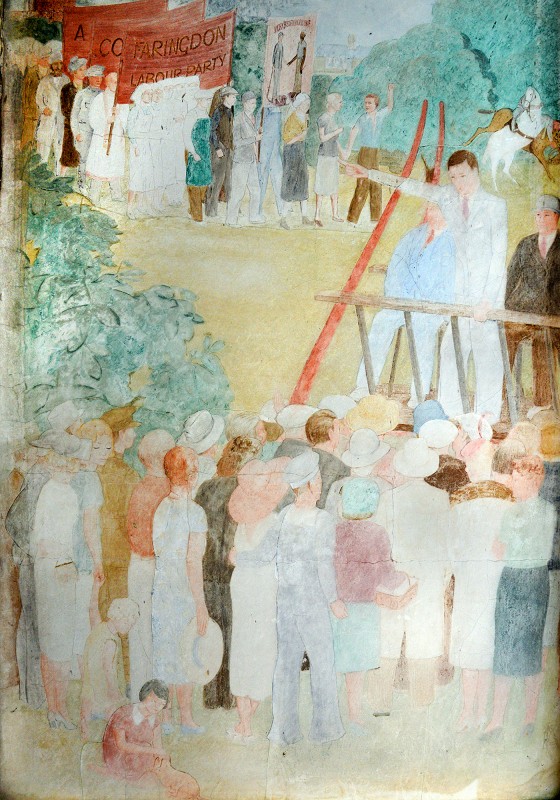
“David Baker’s Paintings Exploring Perception and Visual Experience”

In this article, we dive into the world of artist David Baker, whose work defies conventional classifications and exemplifies a persistent evolution despite a relatively quiet public presence.
—
### David Baker: The Undiscovered Gem of Abstract Art
David Baker is an artist whose work has quietly but profoundly evolved over the years. While relatively unknown within the mainstream art world, Baker’s work, characterized by a concentration on concentric circles and abstract forms, exhibits a unique depth and careful attention to detail. After transitioning from his New York City loft to the rural serenity of Saugerties, New York, Baker’s creative journey shifted further into experimental realms, incorporating collage and painting while influenced by sources as varied as Indigenous art, Renaissance architectural forms, and outsider art.
#### Early Career and Art World Challenges
During the 1990s, Baker began gaining traction within the New York City art scene with his vibrant abstract works. By 1996, however, a harsh dismissal by a prominent *New York Times* critic caused him to step away from public exhibitions. This professional setback was compounded by his departure from his gallery. The art world largely turned a cold shoulder, and Baker, along with his wife Joanne, chose to depart from the city’s relentless pace. They relocated to a former schoolhouse in Saugerties, a move marking a sharp contrast to his earlier life in the metropolitan art epicenter.
Despite stepping back from public spaces, Baker never stopped working. His practice advanced with precision, focus, and curiosity. The concentric circle became central to his aesthetic, functioning not merely as a motif but as a foundation upon which he explored infinite reconfigurations. In leaving the pressures of the city’s gallery-driven art economy behind, Baker found greater freedom to experiment. The concentric circle began evoking rich connections with geometric forms seen in nature, technology, and art, and his work stayed true to certain philosophical and metaphysical ideals.
#### Explored Themes and Influences
Baker’s interest in geometry is evident in his use of concentric circles. This recurring symbol is informed by his interest in diverse sources, including Marcel Duchamp’s *Rotary Demisphere (Precision Optics)* and Jasper Johns’s famous *Target* series. However, Baker’s work veers away from such citations, charting a course deeper into abstraction and personal expression.
In a detailed studio visit, Baker showed a collection of modified xerox copies where he pieced together and reconstructed imagery of concentric circles. The resulting paintings derived complex new shapes from seemingly simple forms. This technique echoes the riffing traditions of early 20th-century modernism as well as creative practices that involve appropriation, but Baker turns these precedents into something entirely distinctive.
Baker’s exploration of cultural and historical motifs—ranging from Indigenous rock art in the American Southwest to the formal beauty of Italian architect Andrea Palladio—also informs his process. He exhibits a fundamental curiosity about visual systems across history and geography.
Perhaps surprisingly, Baker is colorblind to specific shades of red and green, an adaptation that has led him to develop a muted and closely valued color palette. This generates a distinctive tonality in his work, where color serves more as an element of form rather than just emotional reinforcement, allowing the shapes in his compositions to take on more visual and cerebral weight.
#### Key Works
Among Baker’s standout works is the painting *She Knew No Other Way* (2023), where overlapping, pinched forms create a quasi-symmetrical composition. Each layered form is defined by thick outlines and muted color harmonies. The simple yet commanding geometry of Baker’s painting invites viewers to explore the minute variations in each shape, texture, and tone.
Another representative work, *Undulate (Vesica Piscis)* (2021), presents the recurring “vesica piscis” shape—a form where two overlapping circles create an almond-like interior space. In this painting, Baker carefully hand-paints outlines, offering yet another take on the seemingly infinite variations one can achieve with a basic form like a circle.
Meanwhile, *The Ninth of Nine* (2024) introduces greater complexity through interlocking oblong forms, pushing physical tension and symmetry toward new conceptual thresholds. Each area of the painting is filled with layered colors in muted, earthy tones that recall natural landscapes and geological formations as much as they evoke something far more abstract, like the subconscious.
#### Textural and Visual Sensibility
What sets Baker’s work apart is not just the conceptual rigor of the geometry underpinning his compositions but also the visual textures and delicate nuances. His process, influenced by xerox cutting and manipulation, retains a sense of manual labor and handmade finishes. This imbues his paintings with a tactile quality, grounding them outside the cerebral plane and into something more accessible and intimate.
Baker’s works are not just explorations of forms; they play with how humans see and react to visual stimuli—encouraging viewers to actively engage in discovery, interpretation,